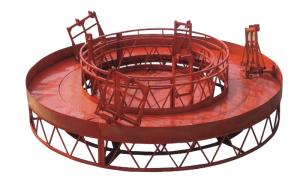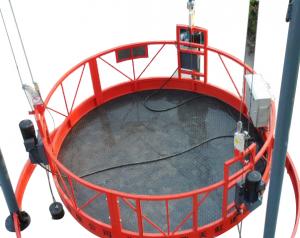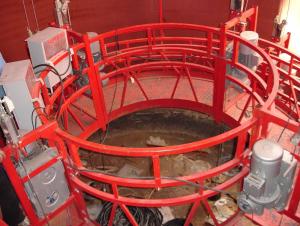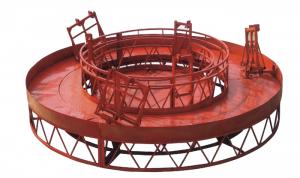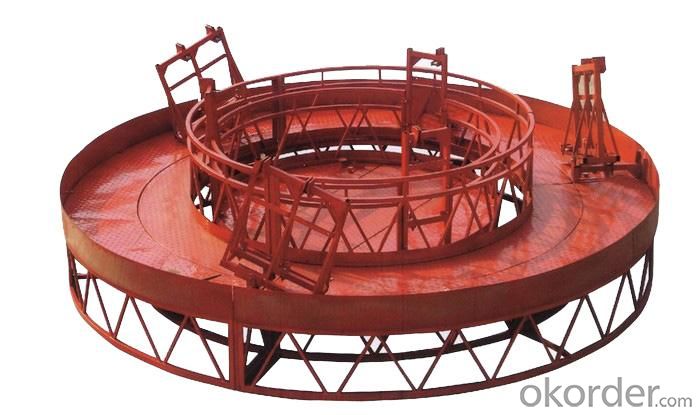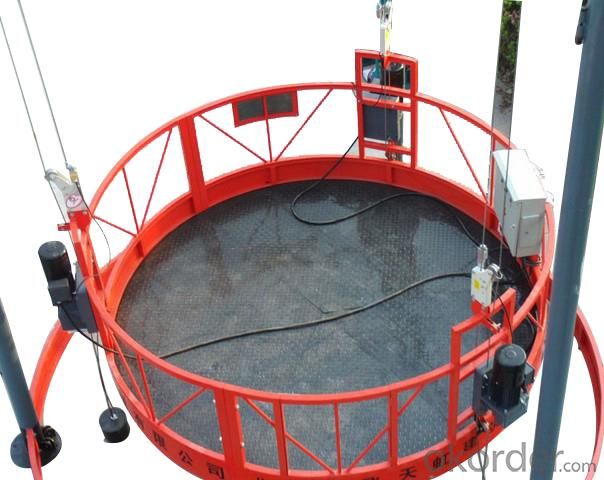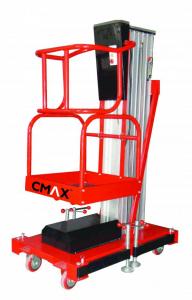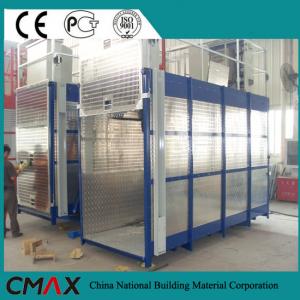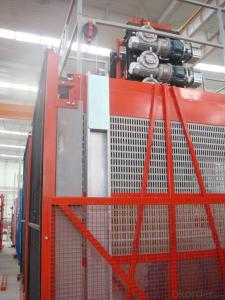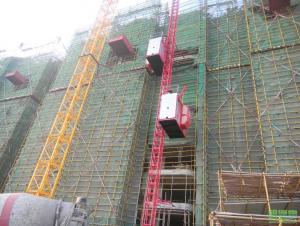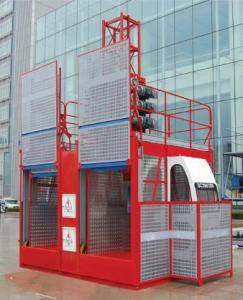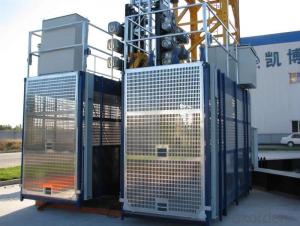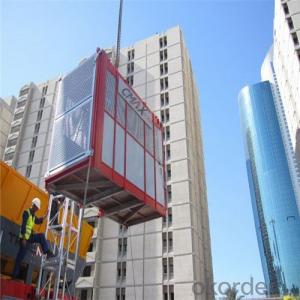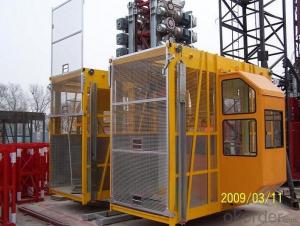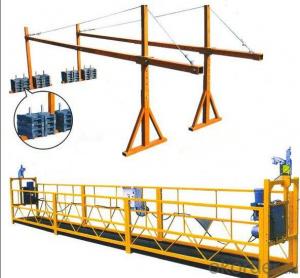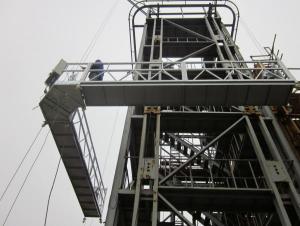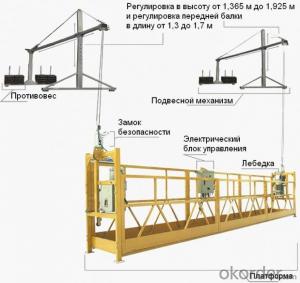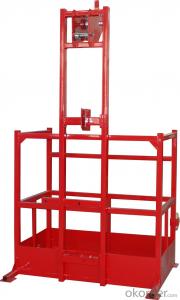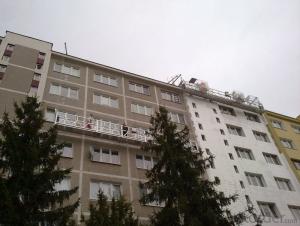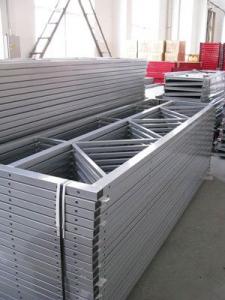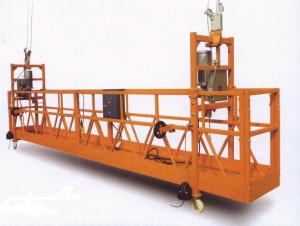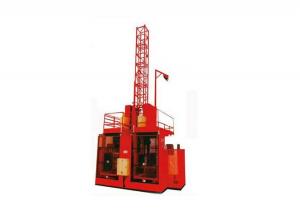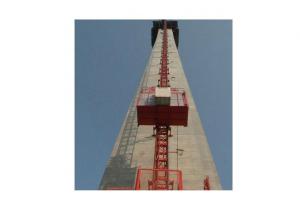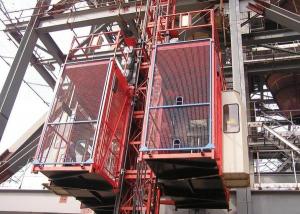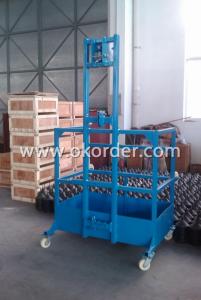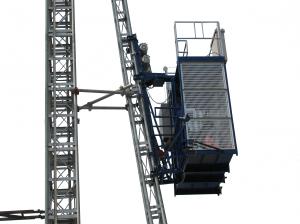Round Suspended Platform
- Loading Port:
- China Main Port
- Payment Terms:
- TT or L/C
- Min Order Qty:
- 1 Set m.t.
- Supply Capability:
- 30Sets Per Month m.t./month
OKorder Service Pledge
OKorder Financial Service
You Might Also Like
Round Suspended Platform for Chimney Maintaince
which is developed and produced by CNBM INTERNATIONAL CORPORA.TION, is ideal equipment for building
facade construction, decoration, cleaning and maintenance. And it is also widely used in elevator installing, ship building and repairing, or in other works such as big-size tank,
bridge, embankment and chimney. ZLP series versatile knock-down platforms provides workers safer, easier and more efficient platform access.
Note: the voltage and frequency could up to different countries' standard
The round platform is specially designed and used in Chimney inside tunnel to maintain and repair the chimney purpose.
Product features:
1. without using the scaffold frame;
2. The round platform is designed as two units: small set inside and large set outside; the large outside platform used for people working and the inside small platform used for material vertical handling with high efficiency and low cost;
3. Easy and flexible operation and easy shift in up and down direction
4. Practical and safety and reliable;
Technical Parameters
Working platform | Rated Load Capacity | 2000kg |
Rated Power | 2.2kwx6 | |
Rated Speed | 8-10m/min | |
Hoisting Platform | Rated Load Capacity | 1200kg |
Rated Power | 2.2kwx3 | |
Rated Speed | 8-10m/min | |
Safety lock | Permitted Impact Force | 30KN |
Rope locking Tilt angle | 3-8° |
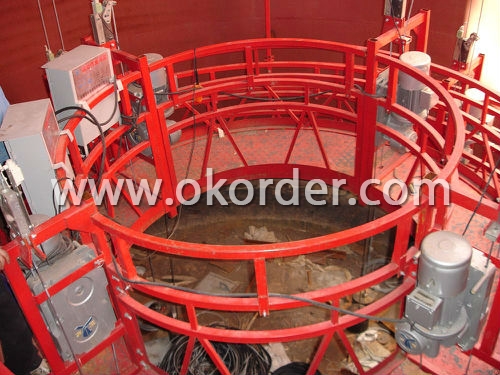
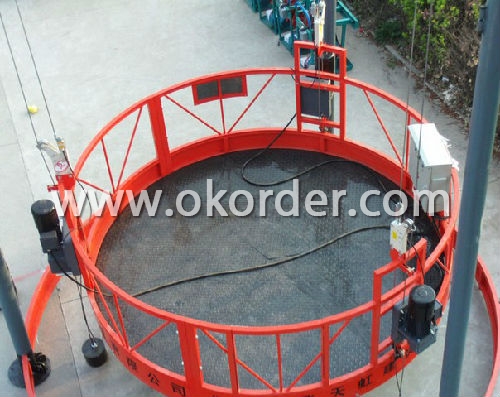
- Q: What is the typical maintenance requirement for a building hoist?
- <p>The maintenance requirement for a building hoist can vary depending on the specific model and usage frequency. Generally, daily checks are needed to ensure safety, including inspecting cables, brakes, and the hoist mechanism. Monthly inspections should be conducted to check for wear and tear, and to lubricate moving parts. Annual inspections by a certified professional are often required to ensure compliance with safety standards and to perform more in-depth maintenance. Regular maintenance is crucial to prevent accidents and extend the lifespan of the hoist.</p>
- Q: This question seeks to understand the benefits and drawbacks associated with the use of hydraulic building hoists in construction.
- <p>Hydraulic building hoists offer several advantages, including high lifting capacity, smooth and controlled lifting, and lower maintenance costs due to fewer moving parts. They are also energy-efficient and can be easily integrated into existing systems. However, they have some disadvantages. For instance, they can be more expensive to purchase initially compared to other hoist types. Additionally, they may require more space for installation and can be sensitive to extreme temperatures, which might affect performance. Lastly, hydraulic systems can be prone to leaks and require regular fluid checks and maintenance to prevent system failure.</p>
- Q: Is it permissible to utilize personal lifting gear for the purpose of lifting objects?
- <p>Yes, you can use your own lifting equipment to lift objects, provided it meets safety standards and is suitable for the weight and type of objects being lifted. Always ensure that the equipment is in good working condition, and you are trained in its proper use to prevent accidents. Compliance with local regulations and guidelines is also crucial to avoid any legal repercussions.</p>
- Q: How many guides are in the construction elevator
- A guide frame on each side of the construction elevator, which is formed by using the section of the standard section in section 1.
- Q: This question asks for a description of the process of using an emergency stop button specifically in the context of a building hoist.
- <p>To use an emergency stop button on a building hoist, first, ensure you are familiar with the hoist's controls and safety features. Locate the emergency stop button, which is typically a red mushroom-shaped button or switch, prominently placed and easily accessible. In an emergency, press and hold the button firmly. This action will immediately stop all hoist functions, including movement and operation. After pressing the emergency stop, evacuate the area if necessary and notify the appropriate personnel to address the situation. Remember, the emergency stop should only be used in situations where immediate action is required to prevent harm or damage. Regular training and drills can help ensure you are prepared to use the emergency stop button correctly and effectively.</p>
- Q: This question asks for examples of typical uses for building hoists, which are devices used to lift materials in construction settings.
- <p>Building hoists are commonly used in various construction applications. They are utilized for lifting and lowering materials and personnel in high-rise construction projects. Some examples include: 1) Lifting building materials such as bricks, cement, and steel beams to different floors of a building under construction. 2) Transporting workers to elevated work areas for tasks like scaffolding assembly or window installation. 3) Moving heavy equipment to upper levels of a structure. 4) Assisting in the installation of large fixtures like HVAC systems or electrical wiring systems. 5) Facilitating the removal of construction waste from upper floors. These applications highlight the versatility and efficiency of building hoists in construction projects.</p>
- Q: This question asks for a comparison between electric and hydraulic building hoists, highlighting their main differences.
- <p>Electric building hoists are powered by electricity and use electric motors to lift and lower loads. They are generally quieter, require less maintenance, and can be more energy-efficient. Hydraulic building hoists, on the other hand, use hydraulic pressure to move loads. They tend to be more powerful and can lift heavier loads, but they may require more maintenance and are not as energy-efficient. Electric hoists are often preferred for lighter loads and indoor use, while hydraulic hoists are chosen for heavy-duty applications and outdoor use where power is not readily available.</p>
- Q: This question asks for an explanation of the different types of building hoists used in construction.
- <p>Building hoists, also known as construction hoists or material hoists, are essential for moving materials and personnel in high-rise construction projects. The main types include: 1. <strong>Freestanding Hoists</strong>: These do not require a building structure for support and are self-supporting. 2. <strong>Cladding Hoists</strong>: Attached to the building's facade, used for moving materials during cladding work. 3. <strong>Personnel Hoists</strong>: Specifically designed for transporting workers, ensuring safety with features like cages and safety devices. 4. <strong>Material Hoists</strong>: Built to transport heavy construction materials and are robust and durable. 5. <strong>Electric Hoists</strong>: Operated by electricity, offering precise control and energy efficiency. 6. <strong>Hydraulic Hoists</strong>: Utilize hydraulic systems for lifting, known for their smooth operation and heavy load capacity. Each type serves a specific purpose and is chosen based on the project's requirements and the stage of construction.</p>
- Q: Should a fire extinguisher be equipped in the construction elevator?
- A fire extinguisher will be required for the 500kg of manned cargo construction elevators at 500kg or more.
- Q: This question asks about the typical issues encountered with construction hoists and seeks solutions to address these problems.
- <p>Common problems with building hoists include mechanical failures, electrical issues, safety hazards, and improper maintenance. Mechanical failures can be fixed by regular inspection and timely replacement of worn-out parts. Electrical issues are often resolved by checking wiring and connections, and using surge protectors. Safety hazards can be mitigated by ensuring all safety features are operational and by providing proper training to operators. Improper maintenance can be addressed by establishing a routine maintenance schedule and ensuring that all personnel follow safety protocols. Regular inspections, prompt repairs, and operator training are key to maintaining the functionality and safety of building hoists.</p>
1. Manufacturer Overview
| Location | JIANGSU,CHINA |
| Year Established | 1998 |
| Annual Output Value | Above US$10 Million |
| Main Markets | CHINA |
| Company Certifications | ISO 9001:2000; |
2. Manufacturer Certificates
| a) Certification Name | |
| Range | |
| Reference | |
| Validity Period |
3. Manufacturer Capability
| a) Trade Capacity | |
| Nearest Port | Shanghai |
| Export Percentage | 0.6 |
| No.of Employees in Trade Department | 300 People |
| Language Spoken: | English;Chinese; |
| b) Factory Information | |
| Factory Size: | Above25,000square meters |
| No. of Production Lines | Above 1 |
| Contract Manufacturing | OEM Service Offered;Design Service Offered |
| Product Price Range | Average |
Send your message to us
Round Suspended Platform
- Loading Port:
- China Main Port
- Payment Terms:
- TT or L/C
- Min Order Qty:
- 1 Set m.t.
- Supply Capability:
- 30Sets Per Month m.t./month
OKorder Service Pledge
OKorder Financial Service
Similar products
Hot products
Hot Searches
Related keywords
